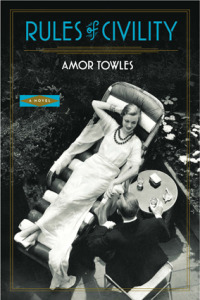The Barbarian Nurseries by Héctor Tobar
 Wednesday, August 17, 2011 at 8:46PM
Wednesday, August 17, 2011 at 8:46PM 
Published by Farrar, Straus and Giroux on September 27, 2011
The Barbarian Nurseries begins with the flip sides of LA: the one that Hollywood showcases, populated by prosperous, shallow, socially competitive consumers; and the one almost invisibly populated by maids, landscapers, day laborers, and the other workers who, speaking heavily accented English, struggle to sustain their families while serving the needs of those who hire them. I am impressed by the fullness of the characters on both sides of the economic divide.
The principle characters of means are Scott Torres and his wife, Maureen Thompson. The Torres-Thompsons and their three children live in a posh house tended by a staff they can no longer afford. As the novel opens, the gardener and nanny have been recently sacked, leaving only Araceli, the maid whose duties suddenly expand to include childcare without a commensurate increase in pay. Following a mild incident of domestic violence, Scott and Maureen make independent decisions to take a "break" from domestic life. Maureen goes to a spa with their daughter, Scott doesn't come home from work, and neither of them bothers to tell the other -- or, more importantly, Araceli, who finds herself taking care of the two boys without guidance from their parents.
Araceli, fearful that the kids will be placed in foster care if she calls the police, begins a journey through the sprawling city and its suburbs in search of their paternal grandfather. Héctor Tobar uses Araceli's quest to illustrate the city's cultural evolution: the ever-changing character of its neighborhoods as members of various ethnic groups settle in and later move on, replaced by new arrivals with a different group identity. Tobar sketches the people Araceli meets in a way that makes each a community representative without sacrificing the character's individual identity.
Araceli's well-intentioned trip begets a chain of events: misunderstanding morphs into misplaced blame that feeds xenophobic fears of undocumented immigrants. Sadly enough, the news media's instant fascination with the story of missing children -- cute white children from an affluent family allegedly abducted by a Mexican woman -- is all too credible.
The last section of the novel is an indictment of the media's "talking heads" who make accusations of criminal behavior before they have all the facts, of prosecutors who feel compelled by media pressure to accuse the innocent, and of the television viewers who -- lacking the patience to wait until a trial brings out all the facts -- allow race or ethnicity to influence their opinions about guilt. While the story loses some of its magic as it shifts from the personal to the political, it also gains power and social relevance. At least for me, the magic returns near the novel's end, beginning with some realistic courtroom drama.
The last section captures an unfortunate aspect of American life with deadly accuracy. In an ideal world, the "no harm, no foul" rule would leave the parents and Araceli free from repercussions, but Tobar recognizes that the media-driven lust for scapegoats drives decisions about arrest, prosecution, and deportation. In different ways, both Araceli and the Torres-Thompsons become victims of politics and a frenzied media. Those with an agenda view Araceli and the Torres-Thompsons as symbols, not as persons.
Tobar's handling of this serious social issue is nuanced: he doesn't simplistically portray all affluent whites as evil or all immigrants as nonjudgmental victims. Scott and Maureen demonstrate complex and evolving reactions to the crisis. They are never depicted as uncaring parents although some members of the public, including some in the Hispanic community, unjustly regard them that way. Some members of the criminal justice system are sympathetic to Araceli and indifferent to political pressures; others are motivated by headlines. Tobar's deft and balanced juggling of these different points of view is impressive.
The Barbarian Nurseries is a captivating, beautifully written novel that tells a timely and important story. It is also one of the best novels I've read this year.
HIGHLY RECOMMENDED



